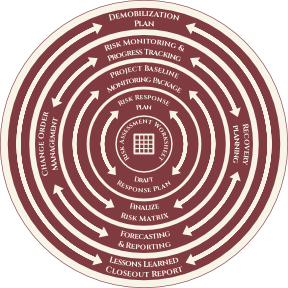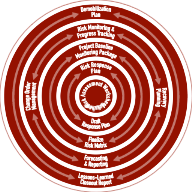Estimating
A good estimate is a key element of your project communication plan and budgeting process. The Estimating Process is both a science and an art-form. We review both the art and the science and a consistent process to get it right.
A sound estimate is a key element of every successful project. The Estimating Process is both a science and an art-form. The science is creating a consistent, repeatable, and complete process that presents cost data in a format that is easily understood by both the estimator as well as his audience. The art-form is the ability to interpret a customer's Request for Proposal (RFP) documents, understand what is required to execute the work package, develop a work plan to generate the deliverables, and finally reduce all that effort to proposal pricing that is both competitive and complete.
While the science of estimating can be taught, the art-form is developed through experience. This intellectual capital defines many companies and their competitive edge. Companies that have both a solid cost performance tracking system and formal lessons-learned feedback loop in place generally increase their intellectual capital at a much faster rate than their competitors, and as a result they are more successful and profitable.
The science of estimating is fairly straightforward:
Tabulate the scope deliverables
Break deliverables down into work tasks and activities
Sequence the work activities to meet bid schedule requirements
Review the work plan and compare to similar past projects
Transfer the work plan to a Bid Summary Recap sheet
Develop the Bid Summary Backsheet(s):
Quantity Takeoff sheet: captures the quantities of all items in the estimate.
Labor sheet: determine labor productivity rates, crew sizes, labor rates, and workweek schedule; price-up manpower needs.
Equipment sheet: determine equipment rates; price-up equipment needs.
Material sheet: obtain material quotes, and price material needs.
Subcontract sheet: Obtain subcontractor quotes when applicable.
General Conditions/Expense sheet: determine and price general conditions/expense items.
Enter the backsheet data into the Bid Summary Recap sheet and apply final mark-ups.
The art-form of estimating encompasses the entire process:
Scope: A complete scope may or may not be available and RFP packages generally leave a lot to the interpretation of the estimator. Implied requirements result from poorly written RFP packages, and when not handled properly during the estimating phase can set a project up for failure. Assumptions and clarifications are a powerful weapon that a skilled estimator uses to structure his proposal with a positive spin to address these types of issues and set the project up for success. Simply listing exclusions and exceptions can generate a negative perception of the proposal in the mind of the customer. The artful use of assumptions and clarifications requires seasoned experience and separates successful estimators from their peers.
Schedule & Work Plan: Estimators must also understand the appropriate level of detail required to develop a schedule that reflects a workable construction plan. This requires understanding the construction activity sequence well enough to identify and analyze the critical path activities against the contract milestone dates. The skilled Estimator knows how to socialize a workable plan with field staff to quantify the production risk and balance the estimate with Customer constraints to deliver a competitive bid.
Pricing: Assigning appropriate costs using the Bid Summary Backsheets requires understanding both the project requirements as well as your Company's business capabilities from the ground up; hence the term "bottoms-up" estimate was coined to reflect this detailed level of understanding.


